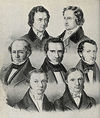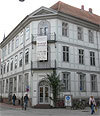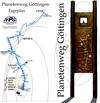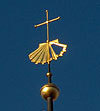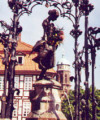Rosarium Goettingen
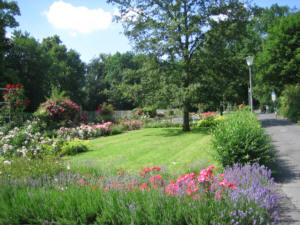
City Göttingen Grünflächenamt
The Rosarium Göttingen became possible and financially viable due to the following companies and institutions under the auspices of the Göttinger Verschönerungsverein:
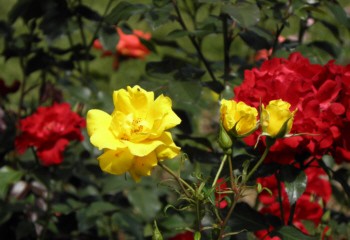
Bandelow& Uhlendorf, Garten- und Landschaftsbau
Horst Diehl, Garten- und Landschaftsbau
Lions-Club G�ttingen-Hainberg
Firma Opel D�rkop GmbH
Firma �kohum, Werk Dransfeld
Sparkasse G�ttingen
G�ttinger Versch�nerungsverein
Stadt G�ttingen
Amt f�r Besch�ftigungsf�rderung
Garten- und Landschaftsbauprojekt
Baubetriebshof
Tiefbauamt
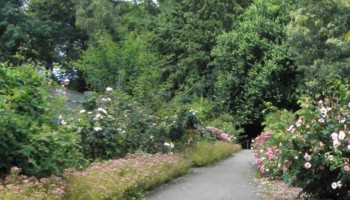
The classification of the roses has been made by origin, historical development and growth features.
Important grades can be found here in the Rosarium:
ALBA – ROSES
Were already there in Roman culture, are already widespread in the Middle Ages. The origin of the R. alba is unclear; it is not a wild species, but a hybrid, probably a crossbred of R. damasceana x R. canina.
BOURBON – ROSES
They are the result of a coincidence crossing of the 'lie de Bourbon' /France) from R. chinensis x R. damascena.
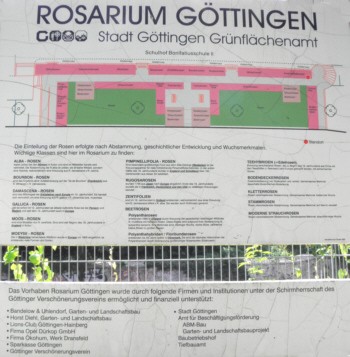
DAMASCENA –ROSES
They are souvenirs of the crusaders to Europe in the 14th-century. It is probably a crossbred from R. galica and R. phoenicia respectively moschata.
GALLICA – ROSES
They have existed already since the 12th-century, as oldest cultivated rose at the Persians and Medes and in Europe since the 13th-century.
MOOS – ROSES
They are a mutation of R. centifolia. In England in culture since the start of the 18th-century.
MOEYSII – ROSES
Wild form, native of west china, imported to Europe around 1900; many forms and varieties were created.
PIMPINELLIFOLIA – ROSES
An especially large bloom form from the Altai-Mountains (west-Asia) is the crossbred partner for many early blooming Pimpinellifolia-hybrids. In the first half of the 19th-century, over 100 garden varieties were selected from this type in England and Scotland.
RUGOSA ROSES
Were imported from Japan to Europe in 1856. At the end of the 19th-century, they were used in France, Germany and the USA for diverse crossings.
CENTIFOLIAS
They were created in Holland in the 16th-century, probably from a crossing of R. damascena bifera x R. alba. They are also called cabbage roses.
BEDDING ROSES
POLYANTHA ROSES
Created in England in 1865, by cross breeding of the Japanese multi-flowering wild rose R. multiflora with taller roses. This category is named R. polyantha, due to its origin. Its characteristics are: low growth, rich flower, numerous small blossoms in large panicles.
Polyantha hybrids / Floribunda roses
Created Denmark, around 50 years later. They are the next progenies of the Polyantha roses through crossbreeding of large blooming rose varieties.

 Deutsch
Deutsch Nederlands
Nederlands Dansk
Dansk Österreichisch
Österreichisch Po Polsku
Po Polsku Italiano
Italiano Francaise
Francaise Portugiesisch
Portugiesisch










